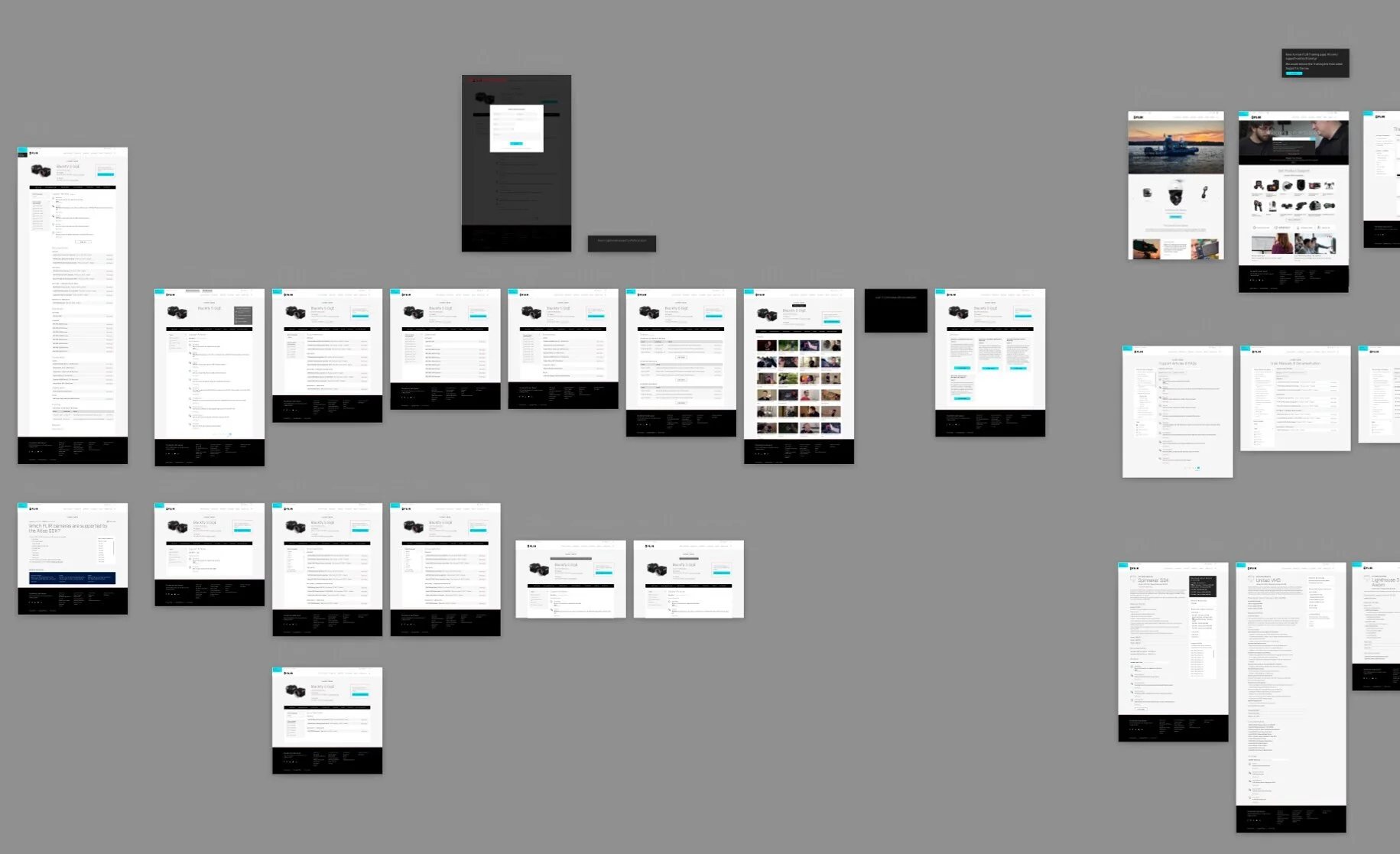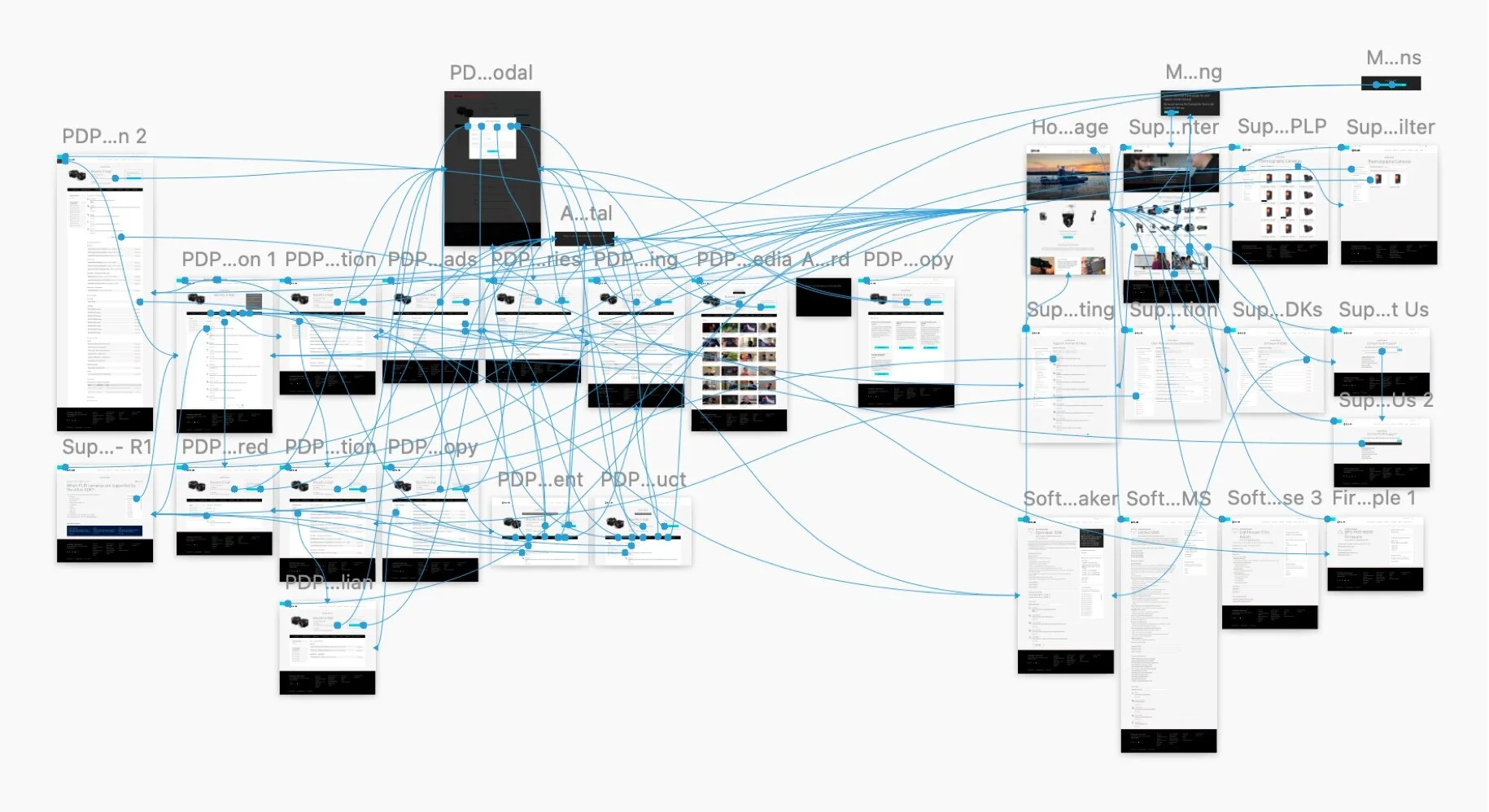Support Center Redesign
Re-thinking FLIR’s post-sale customer experience.
Summary
In early 2019, I led a cross-department project to improve the post-sale user experience on flir.com. This resulted in fewer support contacts, better alignment between Marketing, Support & Service, and Product Management, and a long-term roadmap for delivering a fantastic post-sale customer experience.
Role
This was a long-term (some portions still ongoing) project. I was the lead UX / UI designer in the early stages and Project Manager in the mid-late stages. I led the cross-department discussions and overall project planning.
Why
When we launched the new site in early 2018, building a solid post-sale user experience was, quite frankly, an afterthought compared to driving direct sales and leads. As someone who strongly believes in the power of great post-sale experiences for driving customer loyalty (and thus growth), I was convinced this was a major oversight. I proposed a long-term project that would resolve the major issues and my Manager agreed.
These were a few of the (many) pain points with our post-sale experience in 2018:
The Support Center relied exclusively on customers searching for their product. Based on customer and internal feedback, we knew this resulted in a number of unnecessary support calls and emails.
Some verticals’ products had 40+ variants with model-specific accessories, user manuals, and firmware. We needed a way to present only support assets relevant to that customers’ specific model.
Training was a major opportunity for aftermarket sales growth and our presentation was sub-par.
The goal of the project was to solve these pain points, improve brand perception, and increase Customer Lifetime Value (CLV).
Technical & Resource Constraints
We were quite resource constrained when this project began, and most of our focus was on pre-sale efforts. So I had to get creative with the project management. Our design / development processes generally adhere to some flavor of Agile. In this case, I invested enormous upfront effort in identifying critical pain points and getting aligned with Support / Service and Product Management on the best solutions. My approach was to create a 2-year roadmap of small projects the development team could take on as resources became available. High impact, low effort projects went to the top of our priority list.
Solution
I led meetings with Support / Service and Product Management stakeholders across all of FLIR’s 15+ verticals. The goal was to identify the highest drivers of support contacts and common pain points. This led to a long list of website-related issues to fix, but it also led the teams to clearly see many of the business process issues that more fundamentally caused poor customer support experiences:
Lack of clear ownership for keeping support content updated on the site.
Three separate support portals FLIR.com needed to integrate with in some manner.
~8 separate support & service organizations with vastly different resource levels and approaches.
My approach in all of these meetings was to ask: “What would the ideal customer support experience look like on flir.com”? I set expectations that these improvements would be several years in the making, but if we didn’t understand the long-term direction, we’d only end up solving the ‘easy problems.’
Obviously with ~8 support & service organizations, there were many perspectives on how these problems should be solved and perfect alignment was not the goal. My approach was to focus on commonalities and drive for changes that could be accomplished quickly and at minimal development cost.
This resulted in a 37-screen (and growing) prototype, which can be found here.
Prototyping the Support Center proposal
I then split the project into 28 separate tasks and asked our stakeholders to estimate how positively each change would impact the customer experience. Next, I went through the list with the development team and asked them to provide a level of effort estimate on each task, and ideas on how we could break each task into phases for quicker implementation. I prioritized the backlog based on the highest impact changes and lowest development effort. Since there was significant cost (in terms of both money and time) involved in some of the changes, I presented the final proposal to the President of one of FLIR’s three business units and received his sponsorship for the project.
Over the last two years, we’ve completed ~80% of the changes. In some cases, usability testing and other sources of qualitative research have led to changes in the planned UX / UI.
The screenshot to the right shows a sampling of the task list.
Results
While there have been obvious user experience improvements introduced through this project, the most impactful results have come from stronger collaboration between Marketing, Support & Service, and Product Management. These teams know they have a partner in Marketing who is laser-focused on providing a solid post-sale experience to all FLIR customers.
FLIR.com aside, this project has led to me being consulted on strategic direction and UX / UI design for our support portals so we can ensure the hand-off is as seamless as possible. The sum total of this project is more loyal and satisfied customers who are more likely to stay customers, thus increasing average Customer Lifetime Value (CLV).



